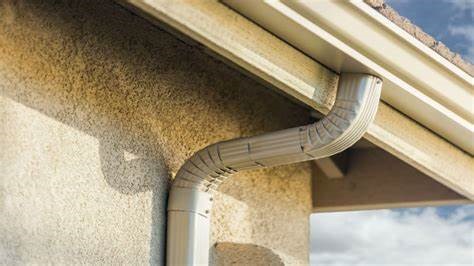
Water is essential for life, but it can also do considerable damage. This is especially true of atmospheric precipitation. It won’t just puddle on the rooftop, sidewalk, or floor; it can also erode the buildings’ foundation.
Gutters protect your home from water damage, whether it has a steep slope or a flat roof. Installed and maintained correctly, this system prevents standing water and ensures it gets to the ground, not house walls or foundation. More on types of these systems read here.
Water entering the house’s structure can result in mold growth. Proper drainage will keep your home safe and healthy. Besides protecting your home, gutters are also attractive and add to the overall look of your property. They can be easy to install and maintain.
Unclogging
When rainwater drainage problems occur, there are some basic steps to follow. First, check the downspouts for blockages. That’s an easy task that can save you a lot of money. Many things can get stuck in these channels, from leaves and branches to dirt and even dead rodents.
Using a ladder, locate the problematic spot. You might get dirty a bit, but it’s so simple that there’s no need to pay for a professional gutter repairer. Once the blockage is found, use the hose to flush the downspout. After removing debris and cleaning the channels, rainwater flow will be reestablished if there’s no additional damage.
Realigning
If water is still not running down the channels, you should check the gutter alignment. You can try water testing the channel to ensure its level and functioning. Some lines may need to be realigned and tilted so the water can flow down the drains.
Untightening brackets will make it easier to adjust the gutter. Before removing them, drive a couple of nails below the line to support it. Tie off a rope along the fascia to determine the incline. The slope should be small, about half an inch for every ten feet. Follow the rope tilt and put a pipeline and brackets back. Pour some water to check if it flows away, and voila.
Leak Fix
If you’re planning to DIY gutter repair, you should start by pinpointing the leaks. These leaks could be caused by cracks in the drains and joints. If they are visible on the pipeline, you can fill them with a sealant. You can even use roofing cement or silicone for small holes. Make sure to clean that spot and remove rust with sandpaper.
Water leaks are common in areas where two channels are connected with a seal or gasket. If these joints are worn out, it’s best to replace them. Do the refitting and fill the holes with sealant. Remove old caulking with a chisel before that.
Loose Fit
After a major storm or snowfall, you should inspect the drainage system and check for failures. Ensure that all the screws are tightly secured. The joints between the channels and joints should be snug and sloped evenly. Lastly, check the downspout anchor straps to ensure they’re tight.
When the gutters are loose, that can result in water leaking into the house. In most cases, bracket replacement will do the trick. But you must install it higher or lower than the original bracket. Use long, galvanized screws and fasteners to ensure this part is tightened and secured.
Gutter Replacement
There will be situations when you have to replace a gutter or its part with a new one. If the damage is shorter than 2 feet, you can replace only that piece. But if it’s bigger, consider changing the entire drain. If it’s minor damage, prepare a new section longer than the damaged part.
After locating a damaged spot, put some wood spacers in the channel and remove hangers in that area. Spacers will prevent fascia and roof damage while cutting the pipeline. Use wire brush and chisel to clean rust and old caulk. Put the new section on the spot and secure it with screws. Apply caulk on the inner side of the gutter and put hangers back.
Check the following source if you plan to install rainwater drainage:
https://www.thespruce.com/how-to-install-gutters-5074432
Gutters are pipelines on the edge of a building that carry rainwater away. If anything goes wrong, standing water can get into your rooftop and house structure, causing major damage to your property. Luckily, you can prevent these risks by prompt gutter maintenance and repair.


